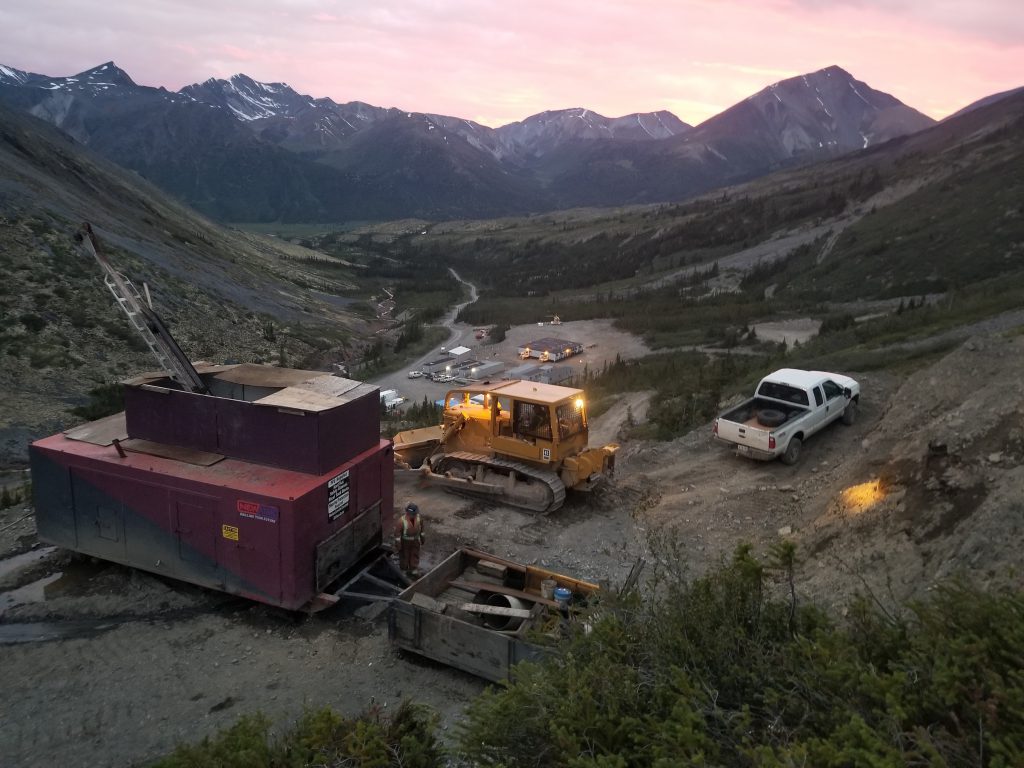Fireweed Metals drills best intersection to date at Boundary Zone at Macmillan Pass Project, Yukon

Fireweed Metals Corp. [TSXV-FWZ; OTCQB-FWEDF; FSE-M0G] reported its best drill intersection from Boundary Zone to date, as well as other spectacular assay results from its 2023 exploration at the Macmillan Pass (Macpass) Project, Yukon, Canada.
Highlights: Best intersection drilled to date at Boundary Zone: hole NB23-028 intersected 143.95 metres (50 m true width) grading 14.45% zinc, 1.15% lead, and 60.0 g/t silver, including 28.71 metres (10 m true width) grading 25.52% zinc, 1.27% lead, and 91.3 g/t silver.
Successful step-out holes continue to increase the extents of known zinc mineralization and demonstrate the high-grade tenor of the Boundary Zone mineralization.
Hole NB23-022 intersected 66.11 m (18 m true width) grading 7.13% zinc, 0.97% lead, and 54.8 g/t silver.
Assays are pending for 19 remaining drillholes including six more from Boundary Zone, and 11 holes from the Tom deposit, and two holes from the Jason deposit.
Brandon Macdonald, CEO, stated, “I am excited to start the year able to say that we have intersected our best-ever Boundary Zone drill intersection. We stepped out 140 m along strike from NB22-002 and NB23-007 and hit a spectacular intersection in NB23-028, further supporting our interpretation that there is a continuous high-grade feeder zone within the stratiform unit at Boundary Zone. We now have multiple wide and high-grade intersections that highlight the potential for another large zinc system within this exceptional critical minerals project.”
The drill holes in this release are located in the central and western areas of Boundary Zone and targeted the stratiform to massive sulphide body with a focus on stepping out from known feeder-style mineralization. NB23-028 intersected a broad, high-grade interval of massive sulphides rich in zinc, lead, and silver that are correlated with this interpreted feeder zone. Stratiform massive sulphides were also intersected in NB23-022 and NB23-029. Stratiform sulphides intersected in NB23-022D1, NB23-029D1 are associated with a separate zone that requires additional drilling and interpretation. Breccia and vein mineralization was also intersected in NB23-028, NB23-029, NB23-029D1 and NB23-031.
Fireweed continues to successfully intersect pyrite-sphalerite-galena as stratiform massive sulphides, laminated mineralization, veins, and breccias in the 2023 step-outs. Mineralization has been intersected in every step-out hole that has been completed to depth. Assays have been received for 34 Boundary Zone holes.
Step-out drilling at Boundary Zone targeting the massive–stratiform zone has resulted in the visual identification of many wide intersections of zinc-lead mineralization with assays pending.
Out of the 40 holes drilled at Boundary Zone in 2023, 36 were step-out holes that tested the vein mineralization, laminated stratiform mineralization, and massive sulphide zones. The geometry and stratigraphic sequence intersected in these holes continue to support the idea that the laminated and massive sulphide mineralization are part of the same geological layer at Boundary Zone, forming an approximately tabular stratiform zone.
The 2023 program achieved 22,500 m of drilling mostly focused on Boundary, Tom, and Jason zones in addition to five metallurgical drill holes at Mactung (Map 1). Use of directional drilling, in which multiple secondary drill holes are initiated at depth from one primary hole, saved an estimated 1,800 m of drilling compared to traditional drilling of multiple new holes from surface for a total equivalent metreage of 24,300 m in 2023.This was Fireweed’s largest ever program and the biggest drill program in Yukon in 2023.
